By John Worley, S.E. and Pierre Quenneville, Ph.D
“Residual drift” is the permanent lateral deformation of a building following an earthquake (Figure 1). In high seismic regions, buildings designed per code utilizing ductile seismic force resisting systems defined in ASCE 7 could experience excessive residual drifts in a major earthquake that may result in a damage level deemed to be uneconomical to retrofit and therefore be demolished.
U.S. building codes do little to limit residual drift. For new building design per ASCE 7-22 there are no residual drift limits for buildings less than 240 ft. in height, and a large 1% residual drift limit is imposed for buildings taller than 240 ft. if a non-linear response history analysis is utilized. For seismic retrofit of existing buildings per ASCE 41 there are no residual drift limits. Residual drift limits are not prescribed in the building code for two main reasons. First, the focus of the code is on life safety and collapse prevention in a major earthquake. Residual drift is not seen as a threat to these if other code requirements are satisfied, including the transient drift limits. Second, a more complex non-linear time history analysis is required to calculate the residual drift that often is not used in design and even then, it is difficult to accurately calculate. FEMA P-58-1 (Seismic Performance Assessment of Buildings) acknowledges the difficulty of calculating residual drifts with standard non-linear analyses and provides a method of estimating residual drift based on the transient story drift.
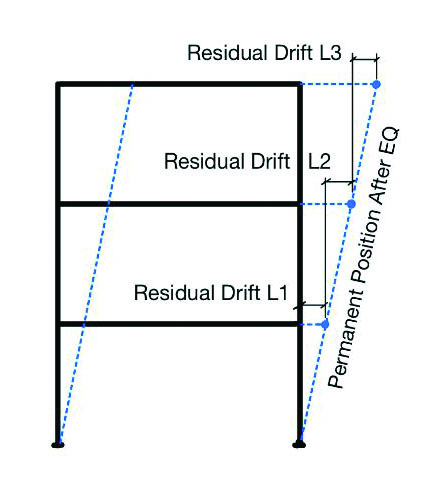
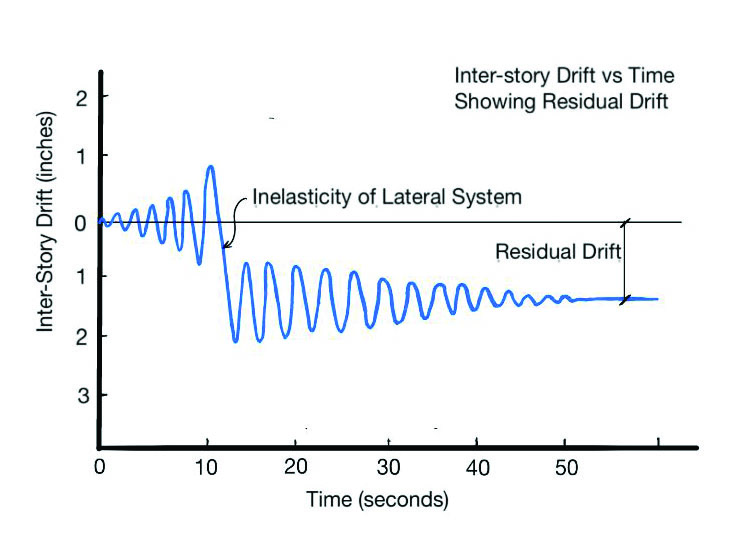
Although the code does not put limits on residual drift, it is important for engineers to understand the level of residual drifts that could occur for a given lateral system and to convey to building owners the potential for these residual drifts in a major earthquake and the corresponding ramifications. Building owners that value the useability of their building following a major earthquake may choose a higher level of performance that limits residual drift. Designing to mitigate residual drift not only provides value to building owners, it is also one of the most effective things a structural engineer can do to contribute to the sustainable design of a project. A building that must be demolished following an earthquake is extremely unsustainable. For example, after the New Zealand Christchurch earthquake, buildings with residual drifts greater than 0.5% were deemed to be uneconomical to retrofit leading to the demolition of over 2,700 buildings in the central business district. This was not only a huge impact on building owners and occupants but on the entire community of Christchurch. Studies by Erochko et al. 2011 and McCormick et al. 2008 found that residual drifts over 0.5% can lead to damage that is uneconomical to retrofit, leading to building demolition. Unfortunately, new building designs that adhere to all the requirements of the code can exhibit residual drifts of more than 0.5% in a major earthquake and therefore may be rendered uneconomical to retrofit and demolished following a major seismic event.
Listed below are a few design enhancements that can help mitigate residual drift with some of these being more effective than others.
Utilize steel or concrete moment frames along with viscous dampers to reduce a structure’s earthquake response and therefore reduce residual drift. Figure 3 shows viscous dampers in braces. This system can be effective in mitigating residual drift if the moment frames stay within their elastic range while being stiff enough to provide the restoring force to recenter the structure. Depending on the analysis method and jurisdiction, this enhancement may require a design peer review.
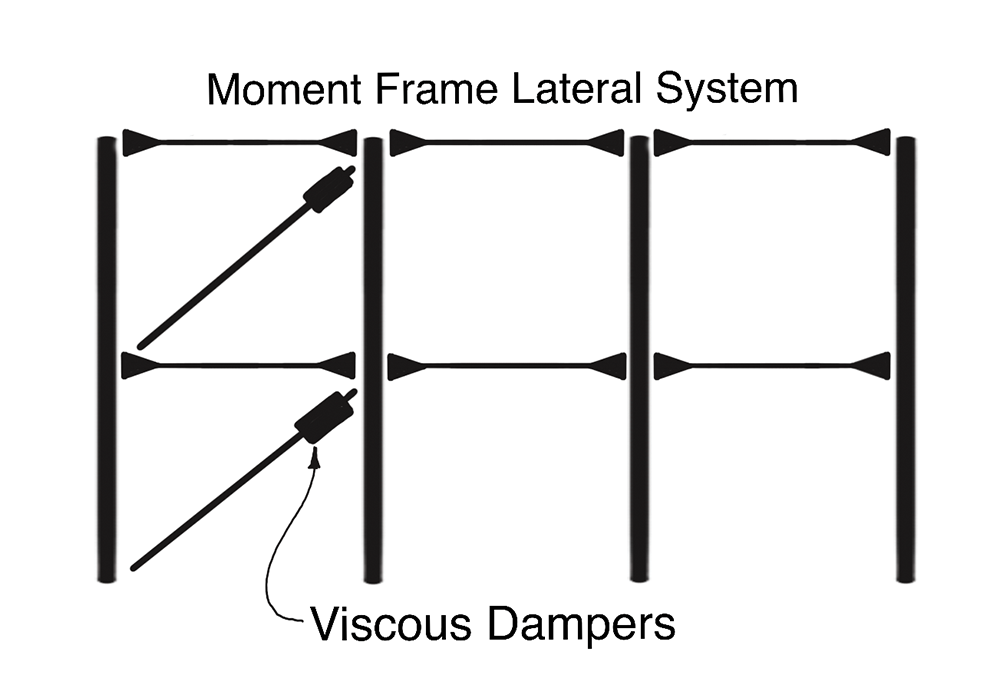
Utilize braced frames or shearwalls along with backup moment frames to provide a post yield stiffness and to provide a restoring force that reduces the amount of residual drift. This system can be effective in mitigating residual if the moment frames are kept in their elastic range while being stiff enough to provide a restoring force necessary to recenter the structure. The brace frames or shearwalls rely on element yielding and these elements may need to be repaired following a major earthquake.
Utilize a rocking lateral force resisting system that employs gravity and/or post-tensioning to provide a restoring force that helps recenter the structure. Figure 4 shows a simple diagram of rocking shearwall. This system can be effective in reducing residual drifts. Rocking systems typically have ductile yielding elements which may require repair following a major earthquake. Depending on the analysis method and jurisdiction, this enhancement may require a design peer review.
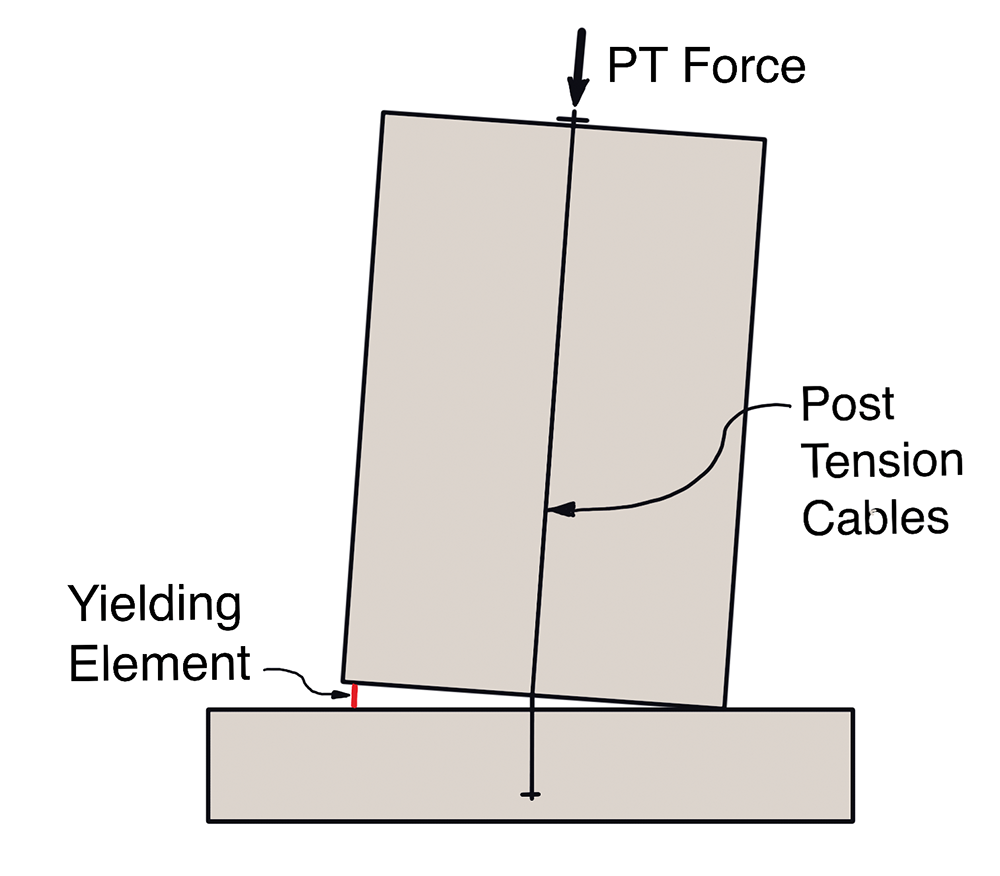
Utilize self-centering technology such as resilient slip friction joints (RSFJs) by Tectonus that provide both damping and a restoring force to recenter a structure so that there is zero residual drift. RSFJs can be used in-line with any lateral force resisting element including braces and ends of shear walls (Figures 5-6). This system is extremely effective and has been tested to show that it essentially produces zero residual drift. In addition, since this system does not rely on material yielding, there will be no structural elements to repair following a major earthquake. Most likely, this enhancement will require a design peer review.
Utilize base isolation system (Figure 7) that does not rely on steel yielding and inherently provides a restoring force that helps mitigate the effect of residual drift. This is an effective system to mitigate residual drift as well as minimize damage to the building. To implement base isolation, a significant construction cost increase will be incurred, and a design peer review will be required.
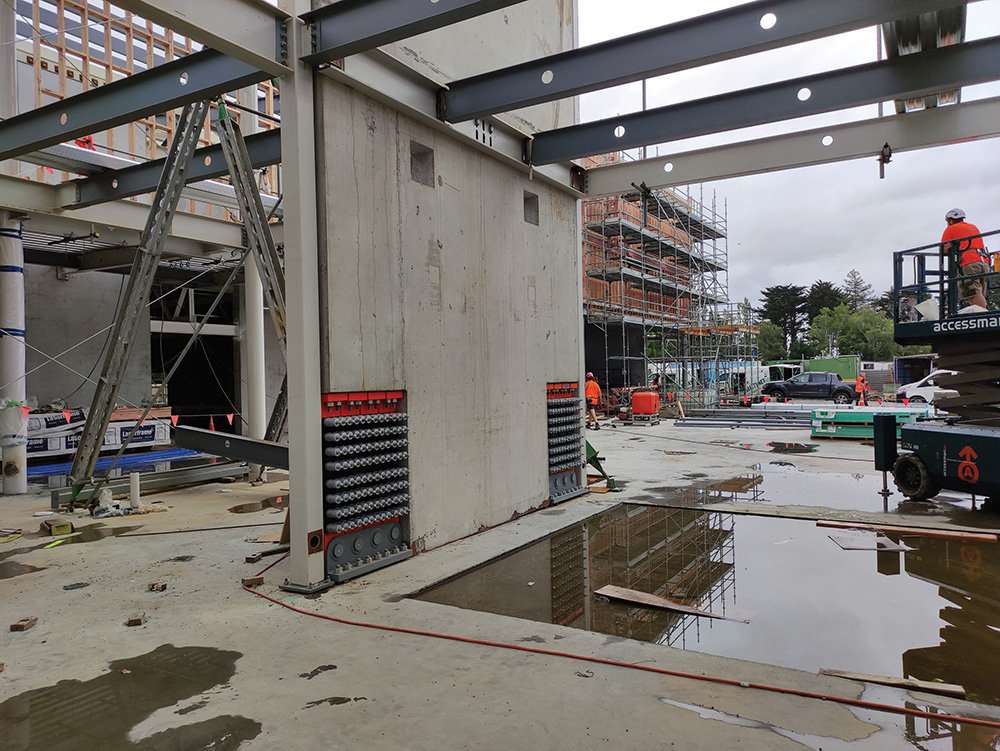
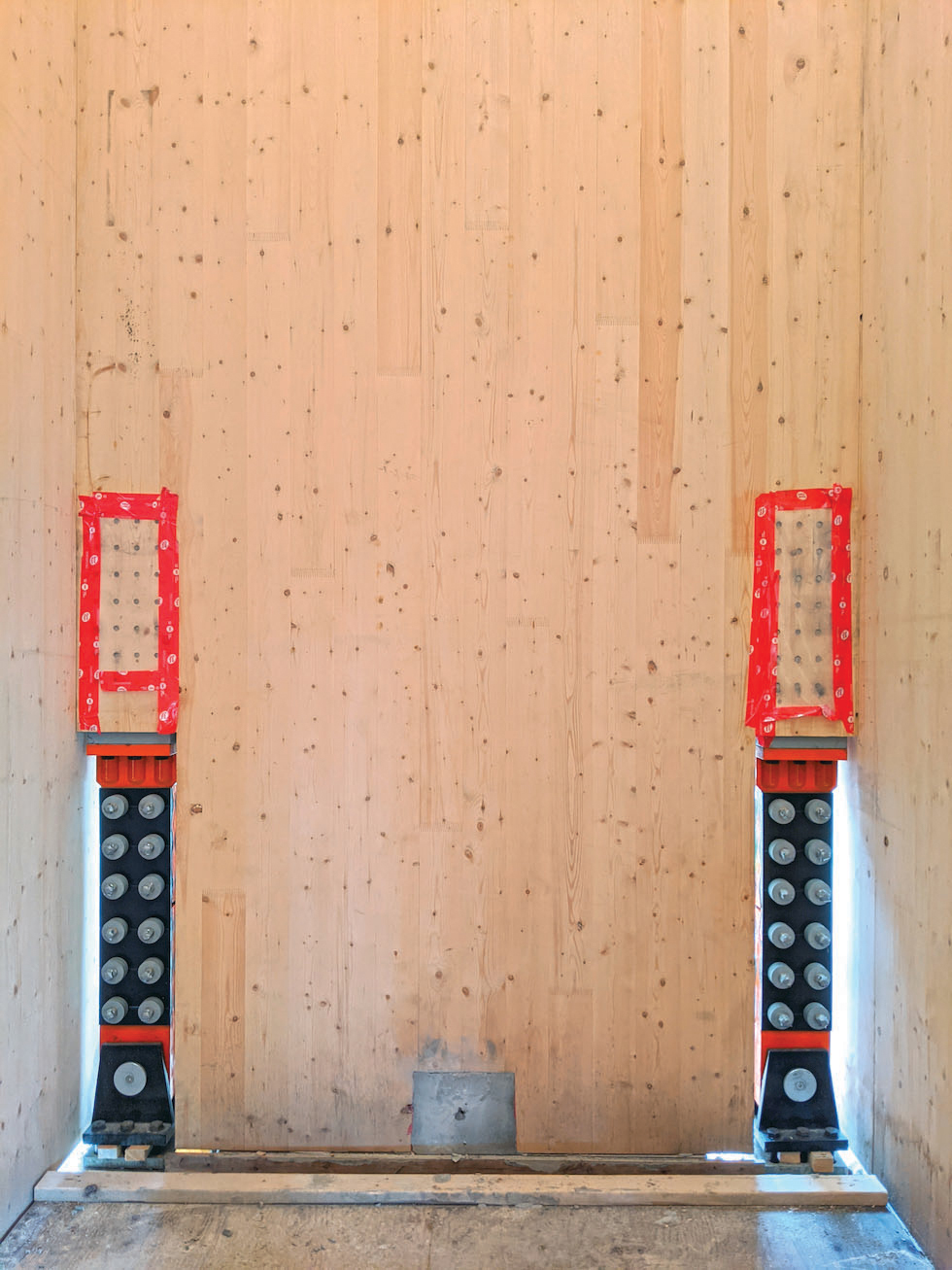
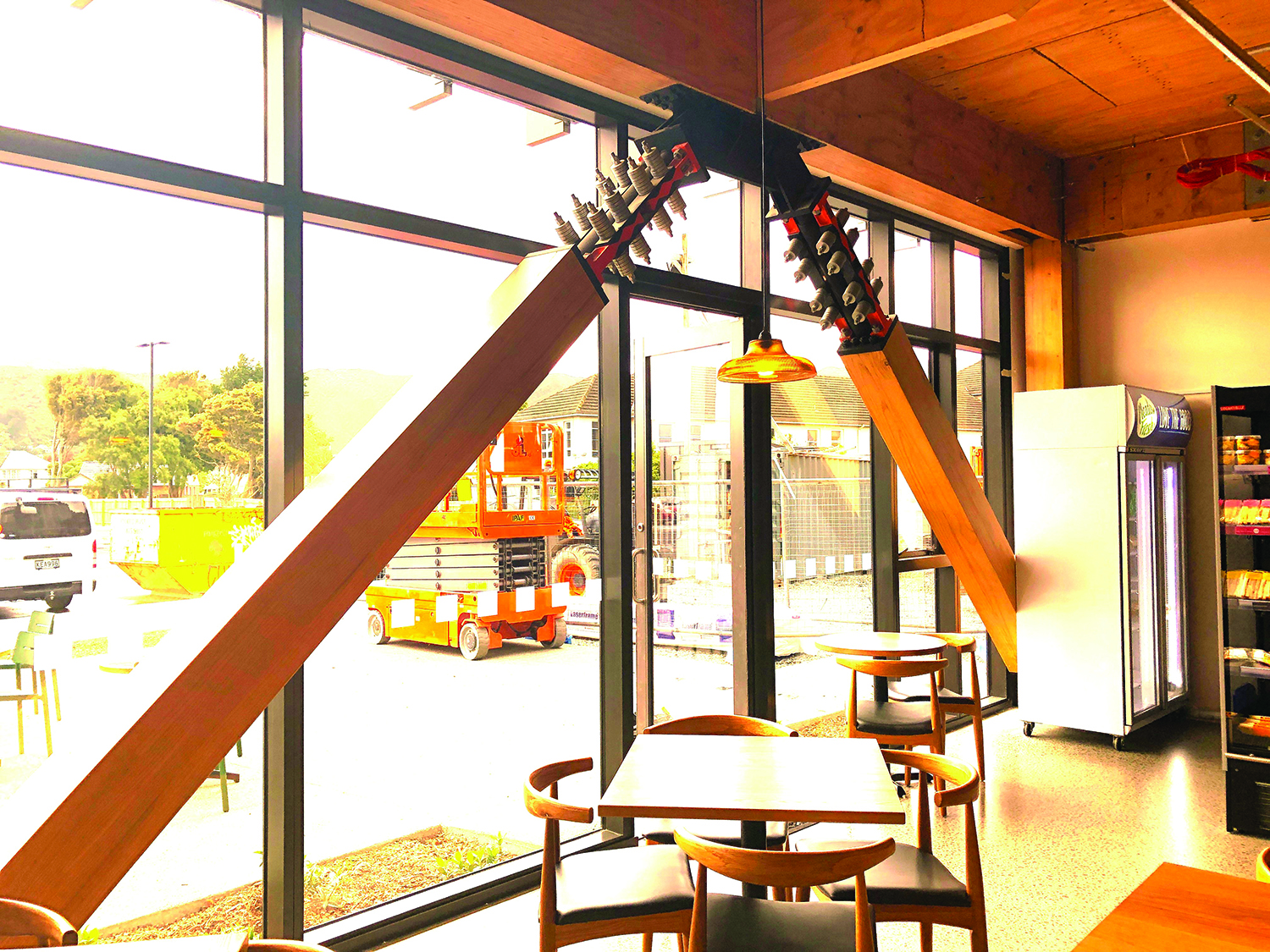
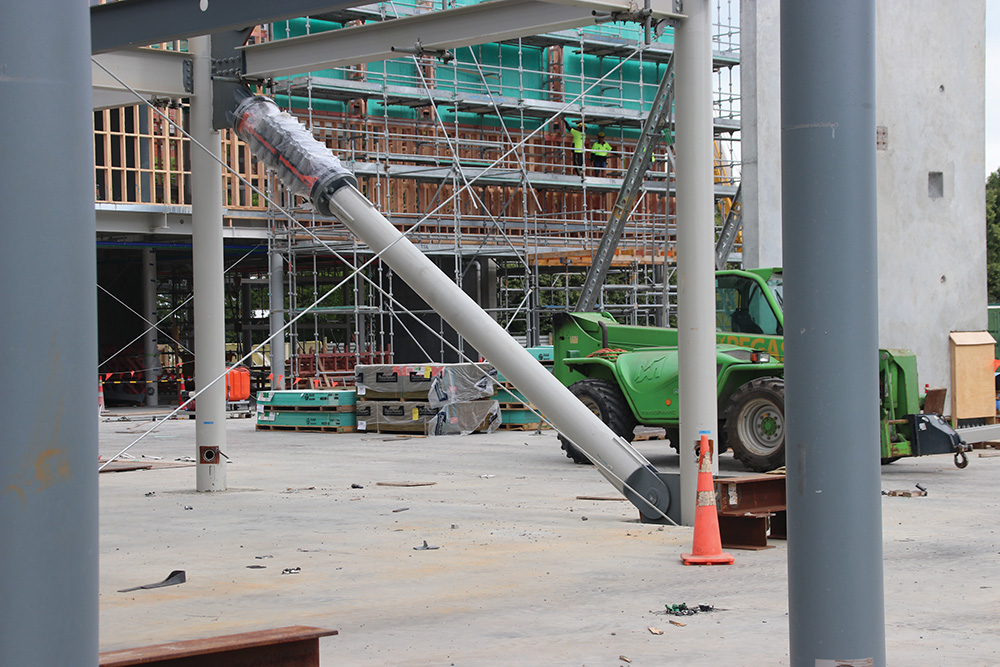
Design a much stiffer and stronger lateral system that stays elastic at higher force levels and does not rely on a high level of ductility. Doing this can have adverse effects by causing much higher lateral accelerations within the building, causing more damage to the building contents. In addition, a stiffer and stronger lateral system will require much more structural material and will be expensive. This can be effective for unusual structures with many irregularities but is not recommended for conventional structures.

In summary, minimizing residual drift in buildings following an earthquake is vital for maintaining functionality and the usability of buildings. It facilitates faster recovery, reduces repair costs, preserves structural elements, and enhances public confidence in the resilience of buildings. By striving for minimal residual drift, communities can mitigate the potential consequences of seismic events and build a safer and more resilient built environment. To achieve minimal residual drift engineers should inform their clients of the potential seismic residual drift that could occur with a standard code design based on ASCE 7 & ASCE 41 and then propose design enhancements that mitigate the amount of residual drift that could occur. To implement these enhancements, a performance-base-design approach utilizing a non-linear analysis may be needed which could require a design peer review. ■
John Worley, S.E, retired Principal at Arup, has practiced Structural Engineering in California for over 35 years and has designed many significant structures including Apple Park in Cupertino, currently is the US Advisor for Tectonus (john.worley61@gmail.com)
Pierre Quenneville, Ph.D, Professor at University of Aukland, New Zealand, Founder & Chief Technical Officer of Tectonus. (pierre.quenneville@tectonus.com)
